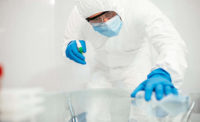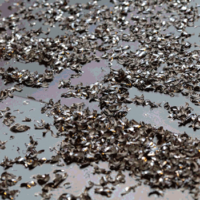The ever-changing paradigms of environmental sanitation in the food processing industry require today's sanitarians to stay on top of the myriad tools and technologies available to assist them in achieving regulatory compliance and in-house sanitary standards. The process of cleaning and sanitizing food-contact surfaces in the food plant or food-handling facility is an integral part of a comprehensive sanitation program, and perhaps one of the areas that must be proactively reviewed given the constant advances in chemical sanitation science.
"Although we have seen the introduction of improved sanitizers, from peracetic acid to chlorine dioxide, and so on, as well as user-friendly microbial testing devices, it all comes back to thoroughly cleaning the surface to be sanitized," says Chris Celusta, Manager, Food Processing Sanitation with Spartan Chemical Co., Inc. of Maumee, OH, a recognized international leader in the manufacture of chemical specialty and industrial maintenance products since 1956. "Without this being accomplished, the sanitizer will not reduce bacteria to safe and acceptable levels."
The considerations involved with choosing the right combination of available chemical cleaning and sanitizing agents begins with one question, adds Robert Powitz, Ph.D., MPH, RS, noted forensic sanitarian and principal consultant with Old Saybrook, CT-based R.W. Powitz & Associates. "Food manufacturers should set a target level of cleanliness, which can be determined by the answer to the following question: 'At what level of cleanliness and at what level of organisms can we consider a process safe?' Ultimately, this goes back to the user's expectation of the sanitizer and the cleaning protocol used, which in conjunction aim at lowering the initial bioburden of a contaminated surface."
Celusta agrees. "The correct use of sanitation chemicals means selecting the "right" product, at the "right" dilution, using the "right" equipment with a well-trained sanitation team. This is the formula that will insure acceptable results in the plant."
In keeping with its expertise in developing and designing programs to educate the industry as to the proper use of sanitation chemicals, Spartan has identified five of the most effective ways to select and use these in the food sanitation program:
1. Outline Your Goals and Objectives and Share Them with the Sanitation Team.
The goals and objectives of any food sanitation program begin with fundamentals such as the prevention and control of microbial activity to preserve the safety, quality and freshness of the food products. Specific sanitation goals include the maintenance of a clean work environment for employees, proper use of sanitation tools and technologies, and maximization of the life span of the equipment and facilities. As long as people understand why they need to achieve certain conditions and how to get there, the food processor will be very successful in administering its sanitation program.
2. One Size Does Not Fit All.
Each plant has unique challenges. These range from the types of soils and/or soil load in a given plant to whether there is an adequate water supply that coincides with the quality, quantity, temperature and water pressure that will contribute to the success of the sanitation program. For example, each operation should consider whether the water has a high content of minerals to determine if an acid wash will need to be done periodically.
Selecting the "right" product at the appropriate dilution is critical. When cleaning, the company must keep in mind dilution ratios, water temperature, contact/dwell time and mechanical agitation tools. As with sanitizers, users must understand the microbial concerns relative to their specific operations in order to recommend the "right" sanitizer.
3. Select the Right Equipment.
Whether portable foamers or wall-mounted chemical dispensing units, these "tools" not only contribute to efficiencies, but also provide productivity enhancements. They are an excellent investment to ensure the successful application of cleaning and sanitizing chemicals, ultimately helping to ensure a successful sanitation program. In addition, there should be consideration of proportioning units, which contribute to worker safety and make sure that the product is properly mixed for its most effective application and result.
4. Ensure Cleaners & Sanitizers are Compatible with Equipment.
In most instances, the majority of equipment in food processing plants are made of stainless steel. However, there are cases in which food contact surfaces are made with soft metals, which makes critical the selection of sanitation chemicals that will not damage the surface of the equipment by scratching or otherwise harming the finish. Such damage can provide a hospitable area for unwanted bacteria to grow and develop on the surface of equipment.
5. Train Sanitation Employees.
Training must be continuous and provide clear, accurate information so that the "human" element functions hand-in-hand with the cleaning solutions and equipment. Remember, the sanitation program is only as effective as the people who implement it on a daily basis.
Ultimately, selecting cleaning and sanitizing sanitation chemicals for use in food supply chain operations must be based on good science. Establishing well-defined microbiological end-points through cleaning, with toxicity, economy and ease of use as relevant factors, will make that selection a valuable tool in an overall program of contamination control in the food industry operation.
spartanchemical.com
Top 5 Ways to Effectively Use Cleaning and Sanitizing Chemicals




